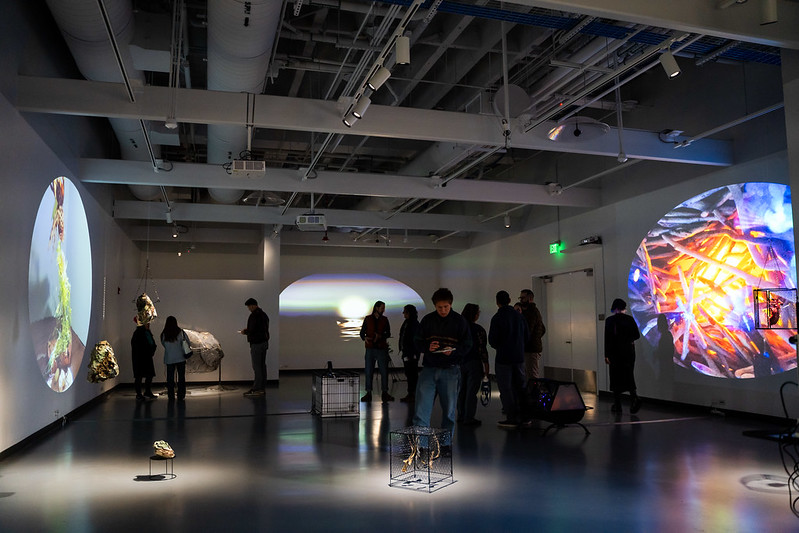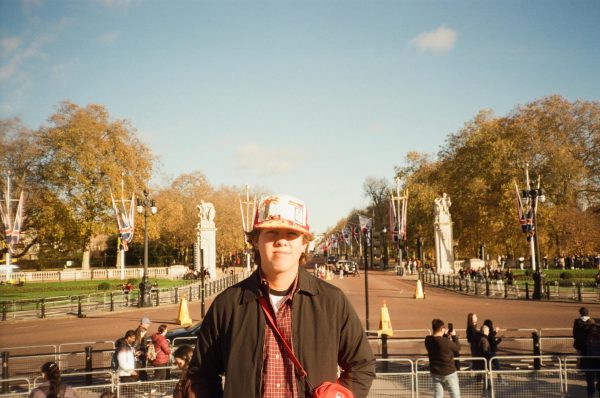Margaret Noble’s art exhibition, Dark Loops, displays visual and conceptual juxtapositions touching on a variety of different concepts. Held at the Mesa College Art Gallery from Feb. 5 through Feb. 29, Noble showcases reality versus illusion through various mediums: preserved dead insects, metal cages, animal bones, and live streamed video. These installations are meant to challenge ones’ way of thinking about nature and the artificial world that we live in.
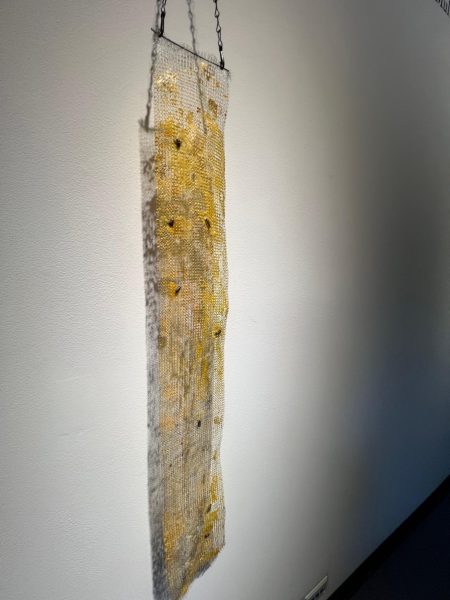
Most of Noble’s pieces use live video streaming to create interactive art, but the “Wax and Bones” series does not. This piece is a sequence of sculptures hanging from the ceiling or placed on the floor throughout the exhibit. According to Noble, “the idea was to create a world and reveal various primitive and industrial materials connected with the narrative of the show and place them in a way that guides the audience and breaks up moments between the intensity of the videos.”
show and place them in a way that guides the audience and breaks up moments between the intensity of the videos.”
One sculpture in particular portrays the concept of natural versus artificial with preserved dead bees on a wall of metal mesh covered in beeswax. The metal mesh that the preserved bees are attached to looks very similar to what honeycombs in a beehive look like, providing a notion of what nature is in a world that is now mostly artificial.
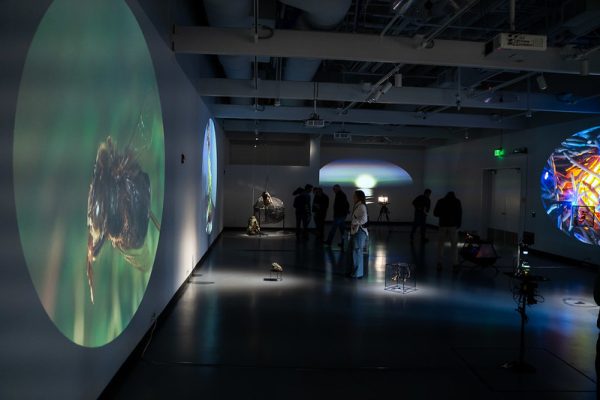
There is a lot to take in when visualizing and understanding the messages Noble conveys. Her piece, “Infinite Bee,” consists of a preserved bee attached by wire hanging over rotating fake grass. When projected on a blank white wall using a live streaming camera, there is a bee in its natural habitat flying endlessly. The difference between reality and illusion is depicted by separating what is actually happening and what one sees through live stream footage.
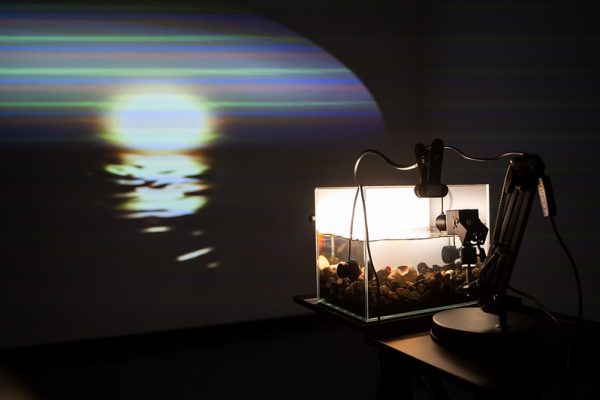
“Horizon”, another one of Noble’s installations, tells the same story. Through live stream footage, a beautiful landscape is seen of the sun hovering above a body of water on the horizon. When looking at what is behind the camera there is a fish tank filled with water, lava rocks, a pink balloon, and a light against a white background to simulate the sun. It is remarkable how Noble turns artificial material into interactive live art through media.
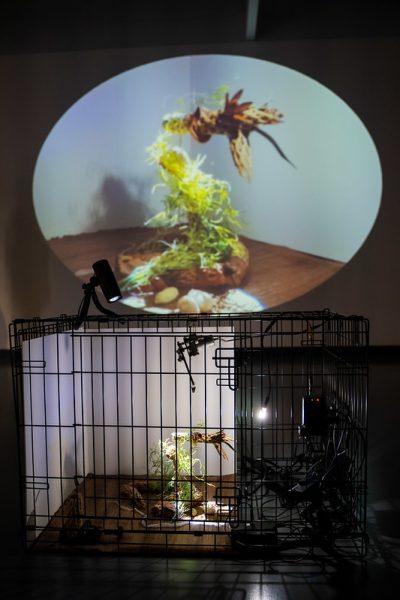
Live footage is the biggest part of Noble’s exhibition. When asked what cameras and techniques she used for her pieces, she said that “it took a long time to build the shots for each of the four live feed installations. The cameras dictated the aesthetics by the shots they made available […]. There were 3 types of cameras: digital microscope, macro digital camera, and standard zoom camera. No fancy techniques except that they are all running through a custom program that delayed them a bit and encircled them in an oval frame.” The types of cameras that are used give a grainy and pixelated shot. When combined with the oval framing and the motion blur that the camera delay adds, a dark and eerie tone is set. With what little equipment and camera techniques Noble uses, she is still able to create pieces that bring forth ample amounts of emotion.
Noble has a way of tapping into her viewers’ sensory experience with her art, visually and aurally. Noble created her own sounds and incorporated other sound pieces from another artist that play in the exhibit with an intention. “I made most of those sounds on a Waldorf Kyra.” A Waldorf Kyra is an analog synthesizer that musicians can use to create experimental music. “I wanted to use digital tech simulating analog sounds to emulate the materials of the show. I wanted to be playful and break up the darkness of the show. I wanted to help construct a world by scoring the space. There are also a couple of sound pieces in the mix composed by the sound artist Tim Kahn.”
Dark Loops pushes the boundaries of how we understand our complicated relationship to nature. Noble’s art seamlessly redefines opposing themes by showcasing how they can be interconnected. With a few cameras, preserved insects, and metal meshing we are able to visualize and connect with Noble and better understand these concepts.
The Mesa College Art Gallery is open 12p.m.-5p.m., Monday through Thursday, or by appointment. There will also be an artist talk on February 28th, 5 p.m. to 7 p.m.
Visit https://www.sdmesa.edu/campus-life/galleries-and-attractions/mesa-college-art-gallery/ for more details.

